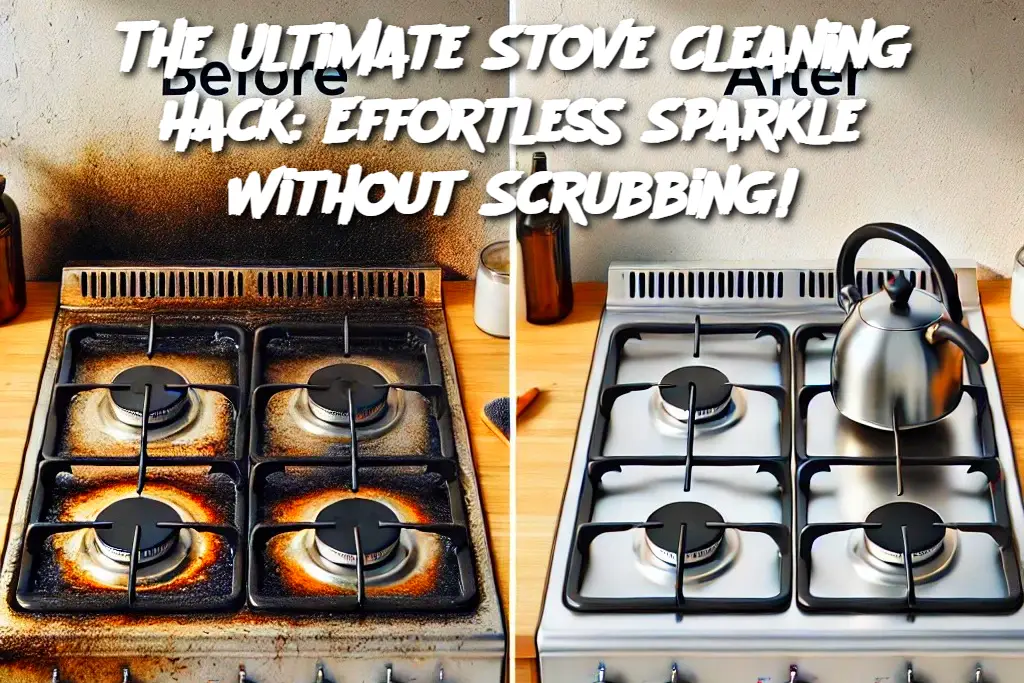Place a stove liner under your burners to catch any food that drips or splatters. These liners are easy to remove and clean, keeping your stove surface looking pristine.
Cover pots and pans with lids while cooking to reduce splattering.
Variants:
For Gas Stoves:
The method described works well for gas stoves as well. However, you can remove the burner grates and soak them in warm, soapy water for a deeper clean. For stubborn grease, sprinkle some baking soda directly onto the grates before scrubbing.
For Ceramic or Glass Stovetops:
If you have a ceramic or glass stovetop, avoid using abrasive scrubbers that may scratch the surface. Instead, opt for a soft cloth and a baking soda paste made with a little water. Follow the same vinegar spray method to ensure a sparkling finish.
For Stainless Steel Stovetops:
When cleaning stainless steel stoves, the vinegar solution works wonders to remove fingerprints and water spots. After cleaning with the baking soda solution, follow up with a small amount of olive oil on a cloth to buff out any streaks, leaving your stove gleaming.
FAQ:
Q1: Can I use this method for cleaning my oven as well? A1: Yes, the baking soda and vinegar method is also effective for cleaning oven surfaces, including the oven door and interior. Simply apply the baking soda paste, let it sit, and then spray the vinegar solution. Wipe clean after the fizzing reaction.
Q2: Will this method damage my stove surface? A2: No, this method is gentle and safe for most stovetops, including stainless steel, ceramic, and glass. Just be cautious about using abrasive scrubbers that could scratch delicate surfaces.
Q3: How often should I clean my stove with this method? A3: For a thorough deep clean, this method works great once every 2-3 weeks. However, if you cook frequently, a quick wipe-down with a damp cloth after each use will help keep the stove clean.
Q4: What if I have a very stubborn grease stain? A4: For tough grease stains, let the baking soda solution sit for a longer period (up to 30 minutes) to break down the grease. You can also use a little extra dish soap or baking soda to make the paste thicker and more concentrated.
Q5: Can I use this method on the stovetop grates or burners? A5: Yes! The grates and burners can also be cleaned with the same method. Just remove them from the stove and soak them in the baking soda and warm water mixture for a deeper clean.
Conclusion:
The ultimate stove cleaning hack is simple, effective, and doesn’t require any scrubbing! By using common kitchen ingredients like baking soda and vinegar, you can achieve a sparkling, grease-free stove without all the effort. Whether you have a gas, electric, or ceramic stovetop, this method works on all surfaces, keeping your stove looking fresh and new. By following these easy steps, your stove will be shining in no time, making your kitchen a cleaner and more inviting space. Say goodbye to harsh chemicals and scrubbing – nature’s cleaners have got you covered!
ADVERTISEMENT

